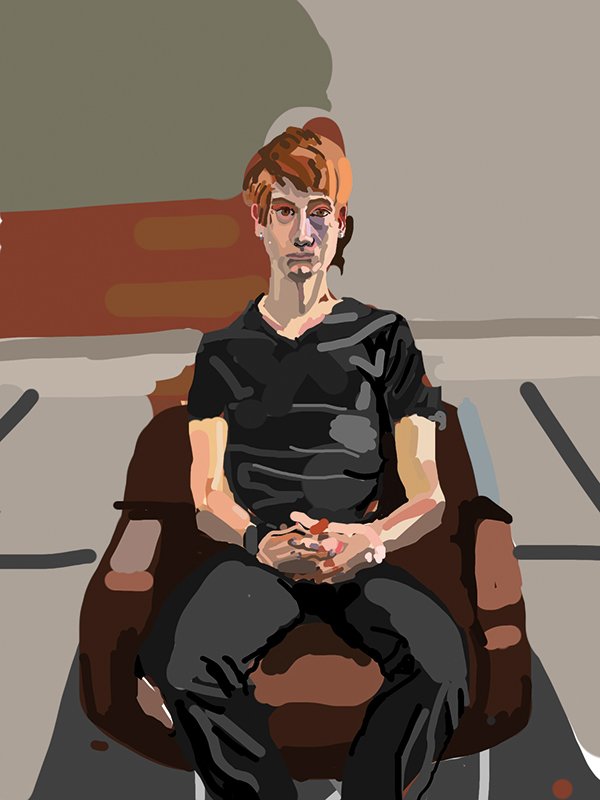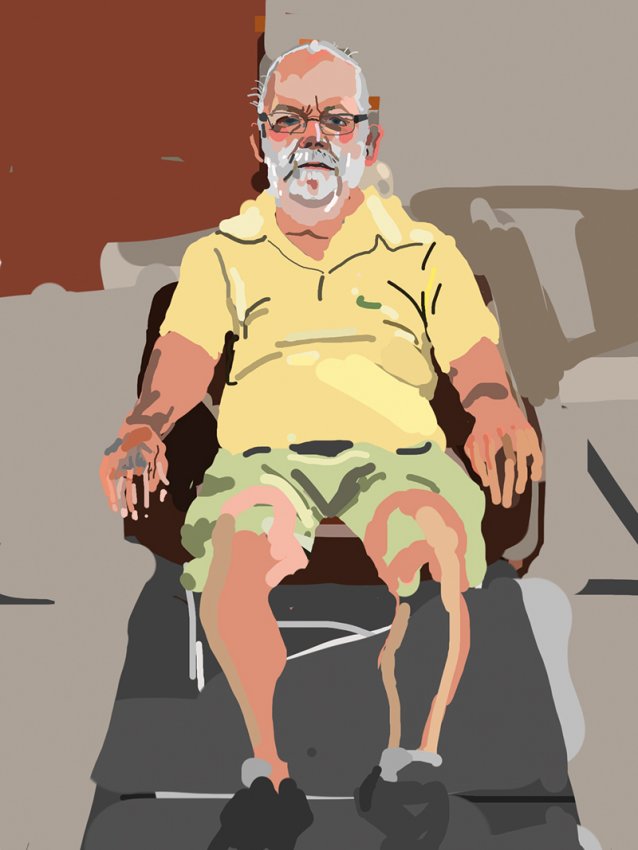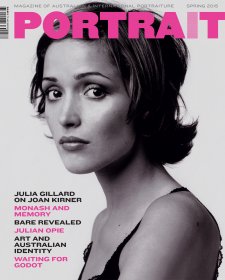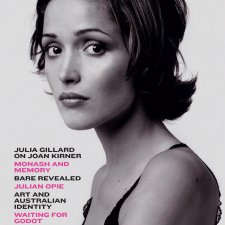Two years ago I embarked on a project called As long as you’re here. I sat in the National Portrait Gallery near the information desk for thirty-three days straight, drawing anyone who sat down opposite me, using an iPad. At the end of the sitting I emailed the subject their digital portrait. I was curious about how people would participate in my project, whether they would be interested in it, and, if they were, how long they would be willing to sit. What surprised me was that the sitters and visitors to the Gallery who watched me drawing were fascinated with the technology. A very common question people had was whether I thought the iPad was the future for portraiture and art.
How I came to use the iPad
In 2009, fresh out of art school, I got an iPhone. Money was tight and it was a huge investment; I downloaded as many free apps as I could find, determined to get the most that I could out of it. One of the first things I downloaded was the drawing app, SketchBookX. Whenever I needed to kill some time, I grabbed my phone from my pocket and started drawing. I drew the backs of strangers’ heads on the train to work, drew sketches of friends from memory, and my girlfriend while she read the weekend paper. Whenever I ran out of money for painting supplies, I painted with pixels. Meanwhile, I continued to paint and exhibit with traditional materials whenever I had supplies; I didn’t take the phone paintings all that seriously. Initially, drawing with my phone was awkward. It took time to orient myself to the colour swatches, the controls for changing virtual brush types and sizes, and to figure out the different functions within the app. Even though an iPhone screen is small, most drawing apps allow the user to zoom to see and work with individual pixels. For example, in the app, Brushes, the zoom capacity is 6400%, meaning that no matter what the screen size is, the details can be continuously refined. I grew better at working with the miniature scale and started pushing it further. I started to take notice of other artists who appeared to be using the device both for its portability and capacity to easily distribute luminously colourful images to audiences. I began to ponder whether iPad drawing could be considered an artistic medium in its own right, the same as oil paint, watercolour or charcoal, or whether it is more a simulation, with nothing new to call its own.
A number of established artists have already blazed a trail with this digital medium. A prominent example is David Hockney, who has been using his iPhone and iPad since 2008 to draw landscapes and everyday objects that reflect his daily life, emailing them to his friends as gifts. Hockney’s ‘art star’ status attracted a tsunami of media coverage when he launched his first exhibition of iPhone and iPad art, Fleurs Fraîches, in Paris in October 2010. Another is Jorge Colombo, who published his first drawing in The New Yorker in 1994; his iPhone sketch featured on the cover of the 22 May 2009 issue. Colombo’s sketches are of life in New York City, drawn outdoors – ‘en plein air’. Hockney and Colombo both use Brushes, a simple app that cost about three dollars at the time, and is now free. A feature of Brushes is that it records the drawing process as a video; Hockney has exhibited his videos, and Colombo’s are available on his website.

















